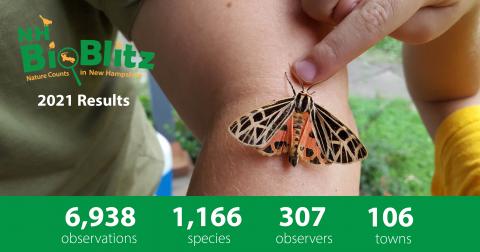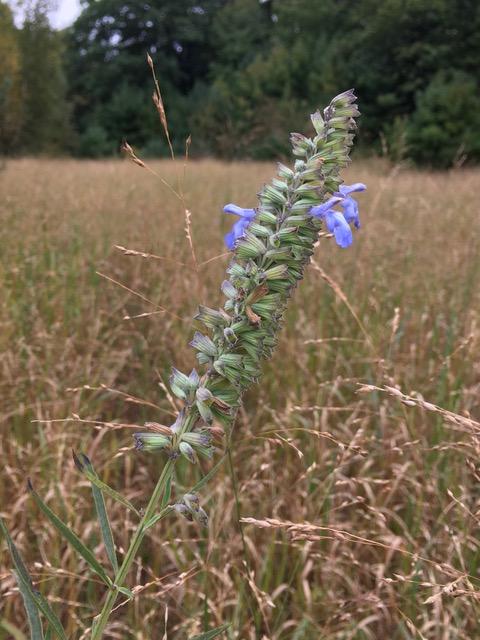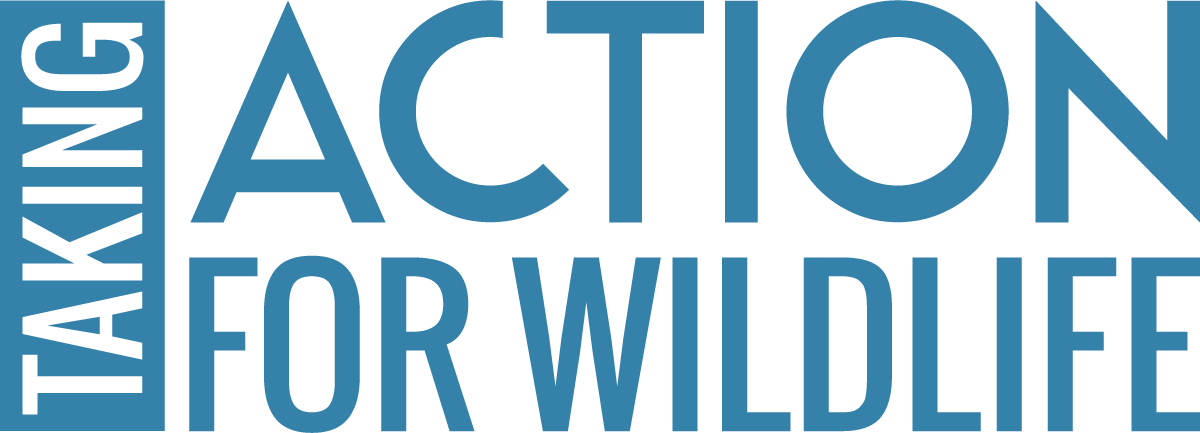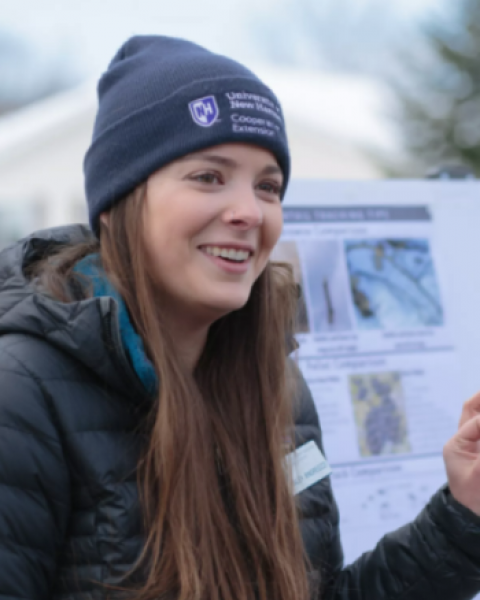The Results Are In!
September was a busy month on town lands in New Hampshire, as community members all over the state got outside to explore and observe as part of the NH BioBlitz. A BioBlitz is a species scavenger hunt where volunteers help find and record data on as many different species as possible in a certain area and a short amount of time. They often take place on one property over the course of a day or weekend but, due to the continuing COVID-19 pandemic, gathering large groups of people together for these events wasn't feasible this year. Instead, UNH Extension sponsored a statewide BioBlitz throughout the month of September to get people outside exploring the species found on town-owned lands all over New Hampshire.

NH BioBlitz participants search for insects in Lee, NH.
Why town lands? This effort built on a town and community forest project led by UNH Extension's Forestry & Wildlife team several years ago that took a comprehensive look at town-owned forestland in the state, municipality by municipality. We learned that 4% of New Hampshire’s forest is in town ownership, scattered in about 1,700 parcels and encompassing 180,439 acres. We also learned that despite owning all of this land, towns don’t always have a lot of natural resources information for those properties. We also heard from towns that they’re interested in getting more people out on and familiar with the land they own. So, the NH BioBlitz project was an effort to help towns meet those goals - to increase the amount of natural resources data available to communities and increase public engagement and education on town lands.
With the help of communities working to spread the word and individuals putting in the time and effort to participate, the 2021 NH BioBlitz was a huge success! Over 300 people visited town-owned land in New Hampshire during September and submitted almost 7,000 observations! There were 1,166 species found in 106 NH towns. There were 10x more observations made on town lands in New Hampshire this September compared to September 2020, and 4x as many species were recorded, which means more useful information about natural resources for New Hampshire's communities. Participants shared their observations using iNaturalist, making the information open and available to all participating communities and other interested researchers, biologists, and naturalists. Our team at UNH Extension also created a useful data dashboard and map, making it easy to explore your town's data.

While the numbers and collective impact are impressive, the individual stories we heard from people all over the state are equally as inspiring. In Kingston, Evy Nathan's NH BioBlitz explorations led her to identifying a state record plant (one not previously recorded in New Hampshire) on a nearby town property in Newton. Blue sage (Salvia azurea) is a non-native prairie species that likely escaped from someone's landscaping project. Carol Sarno reported that participating in the BioBlitz motivated her to look more closely at species in her city of Nashua, which led her to identify a large tree of heaven, an invasive plant, that she hopes the city will remove.

Blue sage (Salvia azurea) is a state record species documented in Newton by Evy Nathan as part of the NH BioBlitz.
The NH BioBlitz can't and doesn't take the place of a formal natural resources inventory or survey that can help guide management and conservation decisions in the future. But, it did demonstrate that community members have the ability to provide a lot of useful natural resources information. And if knowledge is power, communities throughout New Hampshire ended the month of September with more of the information that they need to make informed decisions as stewards of town land.
2021 Fall Taking Action for Wildlife Newsletter


